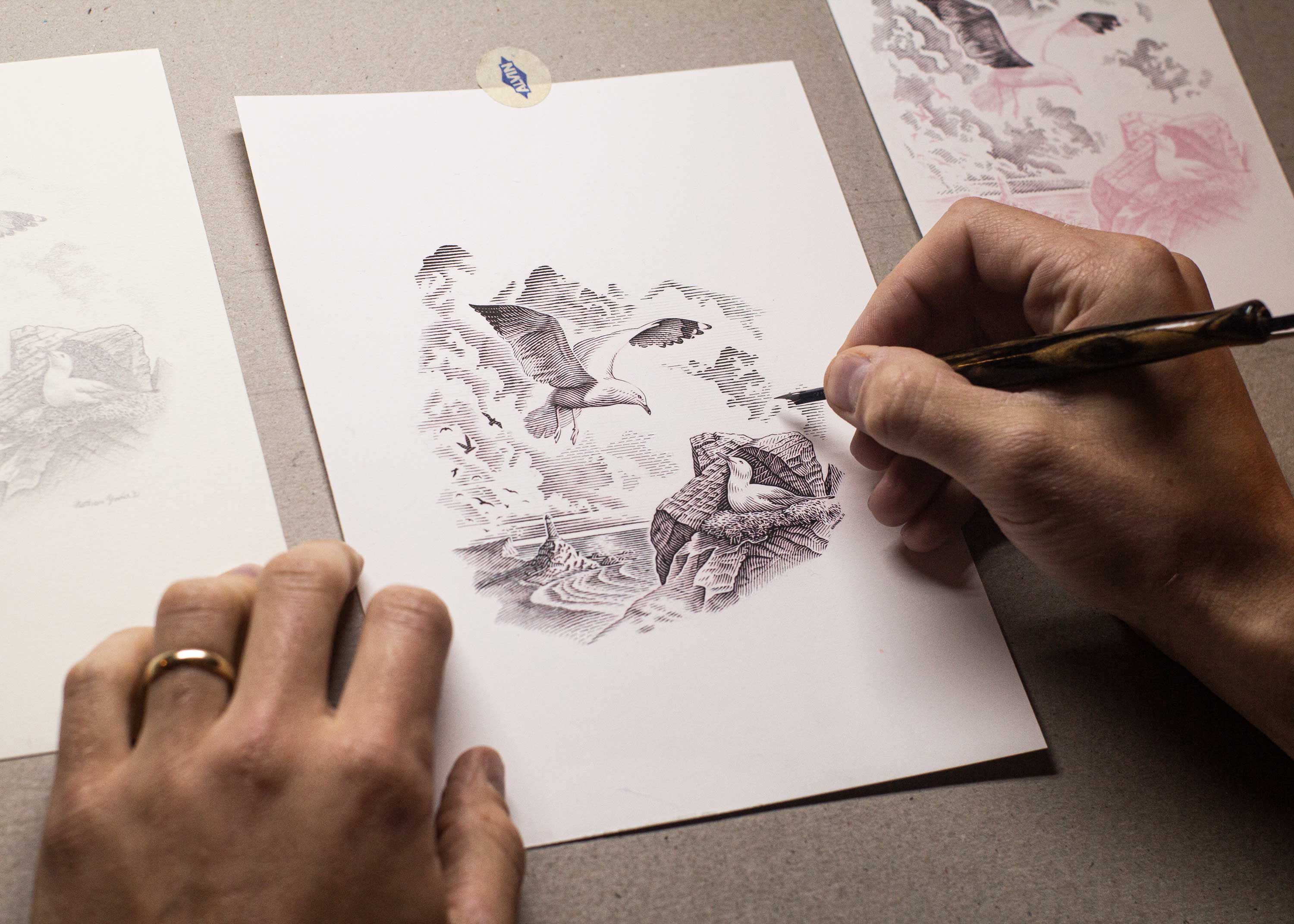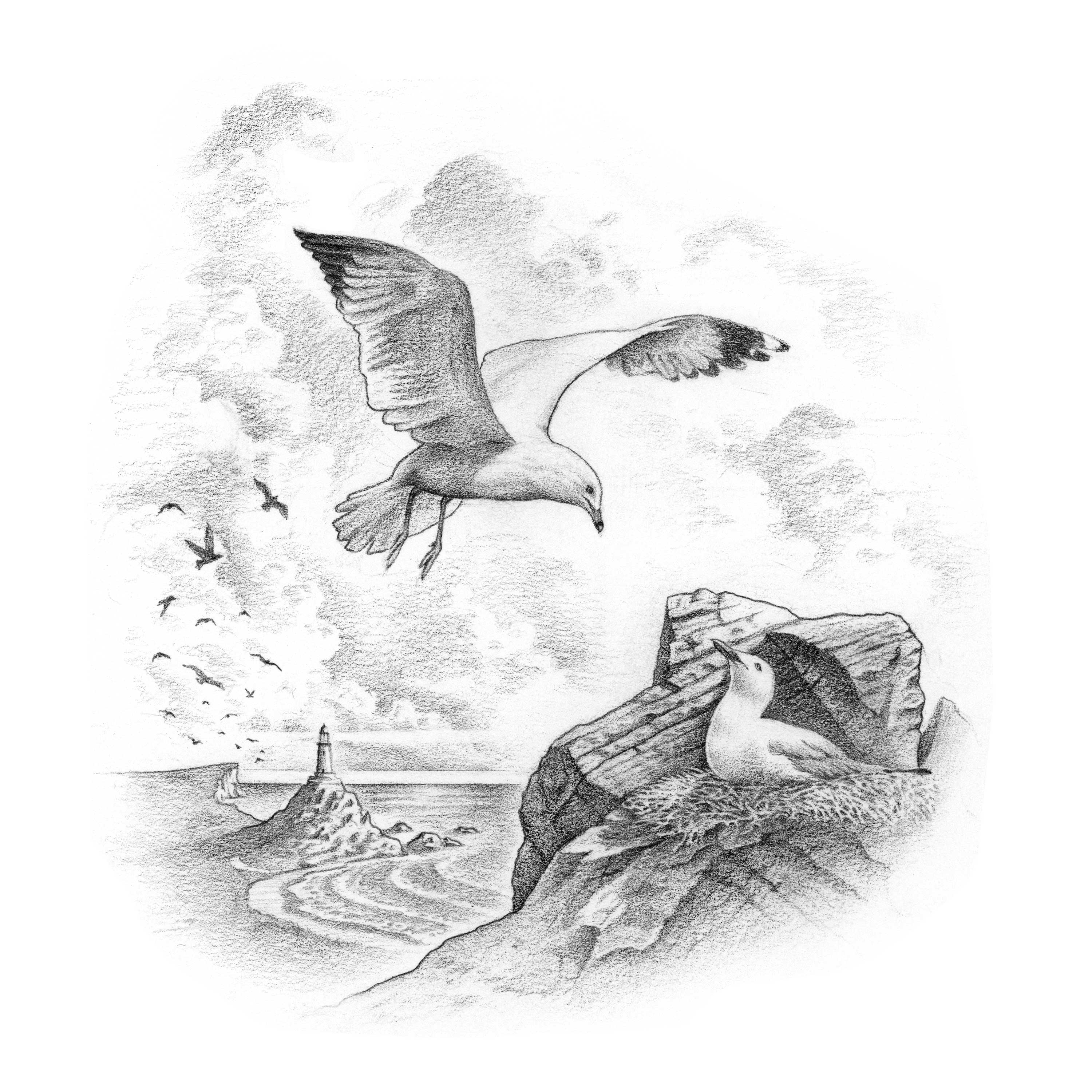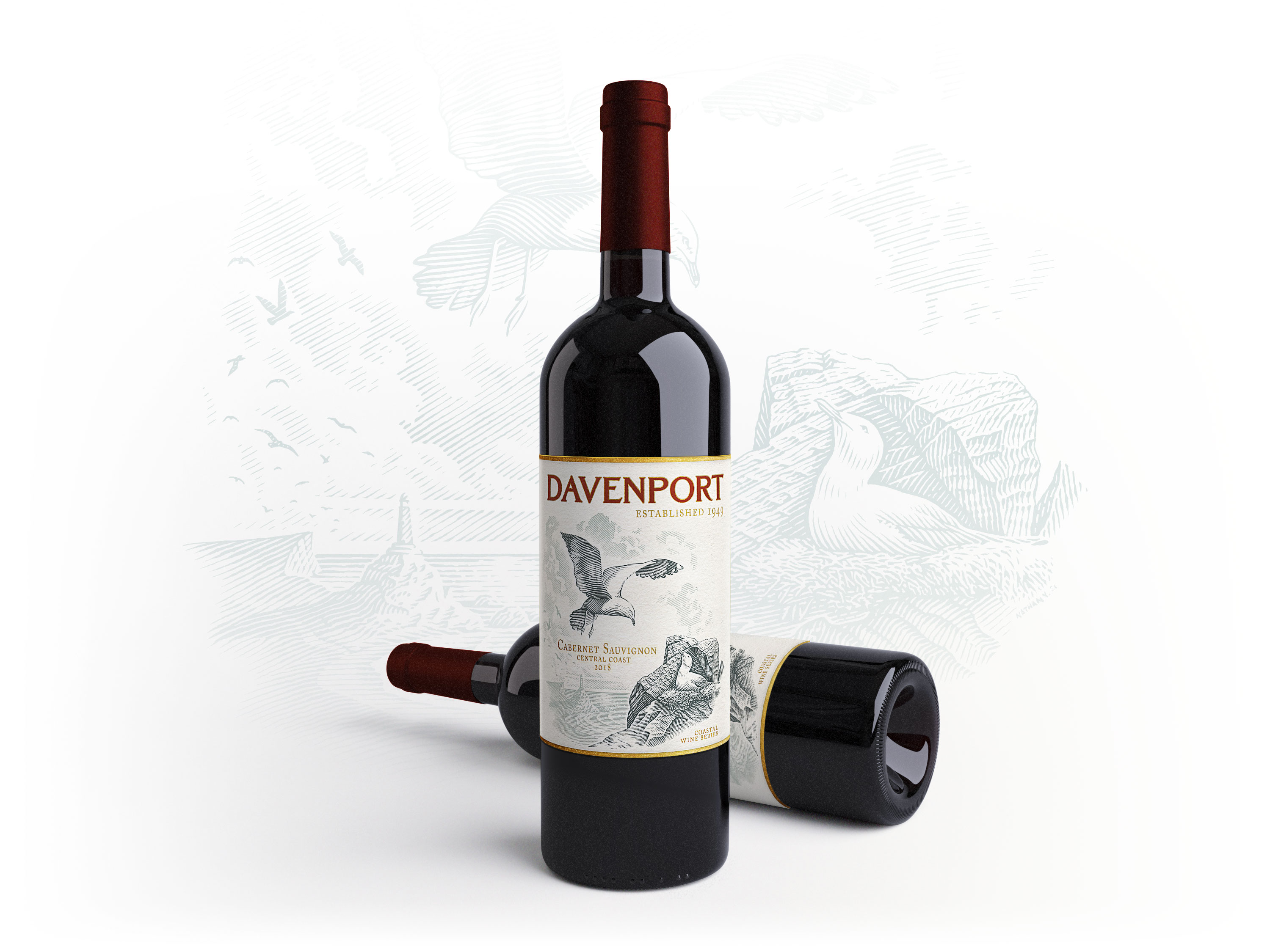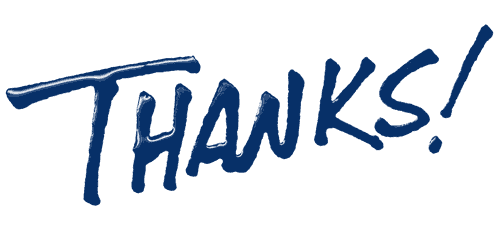Process
A general overview of workflow, timing, & pricing
Introduction
Whether you’re a prospective client or a fellow artist, thank you for your interest in my work. My hope is that this overview will serve to better acquaint you with how I work and quote projects.Note:
At the end of this page you will also find a short explanation of how I quote projects.
Phases Of A Project
While each job comes with its own particular set of needs every job can be broken down into three distinct phases; 1. Ideation/Sketches; 2. Revisions; and 3. Finals. In order to give a glimpse into how I approach this process, below I have assembled a brief case study of an illustration that I completed for a conceptual wine label. That said, no matter what the project or illustration style, the same general process applies.
Phase 1: Ideation and Sketches
To kick things off, the client sends me an email containing a document called a brief which explains the vision that they have for the label. Often times, the brief takes the form of a .pdf including notes and reference imagery helpful in explaining the general idea and aesthetic to be conveyed through the artwork. A clear and thorough brief is key to a successful collaboration.
Once an agreement has been made on cost and timing I then set to work on rough sketches. For this job only one initial sketch was required, some jobs may require more. The initial sketch is loose in nature and lacking fine detail. The main idea here is to quickly communicate the composition of the illustration before investing too much time in a direction that may not be the right one for the client.
![]()
To kick things off, the client sends me an email containing a document called a brief which explains the vision that they have for the label. Often times, the brief takes the form of a .pdf including notes and reference imagery helpful in explaining the general idea and aesthetic to be conveyed through the artwork. A clear and thorough brief is key to a successful collaboration.
Once an agreement has been made on cost and timing I then set to work on rough sketches. For this job only one initial sketch was required, some jobs may require more. The initial sketch is loose in nature and lacking fine detail. The main idea here is to quickly communicate the composition of the illustration before investing too much time in a direction that may not be the right one for the client.

Phase 2: Revisions
Once the initial sketch is approved a more clearly drawn sketch is made. This is done while taking into account the client’s feedback in which various revisions and considerations were requested. It may take several rounds of feedback and revisions before the refined sketch is approved.
![]()
As you can see, in this phase of the project, the final illustration style to be used has yet to be applied. This is due, once again, to the fact that it is much faster to work with pencil than it is with a pen. Whereas in the initial sketch, composition was the primary focus, in this phase of the project, the personality, values, and textures of the subject matter are detailed before commencing work on the final line drawing.
Once the initial sketch is approved a more clearly drawn sketch is made. This is done while taking into account the client’s feedback in which various revisions and considerations were requested. It may take several rounds of feedback and revisions before the refined sketch is approved.

As you can see, in this phase of the project, the final illustration style to be used has yet to be applied. This is due, once again, to the fact that it is much faster to work with pencil than it is with a pen. Whereas in the initial sketch, composition was the primary focus, in this phase of the project, the personality, values, and textures of the subject matter are detailed before commencing work on the final line drawing.
Phase 3: Final Artwork
Once the sketch has been revised and refined to a satisfactory point, final artwork is then produced. Most all final artwork is made on paper using traditional mediums although occasionally final artwork is created in a purely digital format.
Once the sketch has been revised and refined to a satisfactory point, final artwork is then produced. Most all final artwork is made on paper using traditional mediums although occasionally final artwork is created in a purely digital format.

Nonetheless, at this phase, it becomes increasingly important that all revisions to the artwork have been expressed and addressed. Revisions made to final artwork, while possible, do require more time and may merit additional fees.
Unless otherwise specified or requested, all final assets are delivered as high resolution, vector, Adobe Illustrator files.
Unless otherwise specified or requested, all final assets are delivered as high resolution, vector, Adobe Illustrator files.

Toolkit
The applications and tools listed below are those which are common in my creative process. While I primarily work on paper, all of my work is finally scanned into the computer where minor revisions and touch up work is completed using my Wacom Cintiq tablet within Photoshop and/or Illustrator.Hardware
- Pen & Pencil
- Paper & Scratchboard
- Mac Studio
- Wacom Cintiq Pro
Software (Adobe CC)
- Photoshop
- Illustrator
- InDesign

Pricing
Please note that I do not quote based on an hourly rate. Rather, when preparing a proposal, I take into account the entirety of a project’s scope. This includes factors such as usage (how, where, and for how long the artwork will be used), the level of detail required in the rendering of the artwork, how soon the artwork is needed…etc. I have found project based pricing to be most effective in keeping both artist and client accountable to a clearly defined agreement. That is to say, the artist does not abuse an hourly rate at the client’s expense and the client keeps feedback clear and concise within a limited number of revisions to ensure that the project stays on course.Base Rate
In most cases, pojects must meet or exceed a budgetary threshold of $3,500 to be booked in advance. While projects with budgets falling below that threshold are negotiable, compromise cannot be guaranteed.
Turnaround
The turnaround time of a project primarily depends on the number of deliverables needed, the complexity of each, and the level of availability that I have open at any given time. That said, the ideal timeline for a project, similar in nature to the case study shown above, is between three and four weeks. Similar jobs have been completed within a single workweek. That said, such tight turnarounds are often accompanied by a rush fee proportionate to the amount of time that has been shaved off of the project’s originally estimated duration and depend upon my level of availability at any given time.Conclusion
Regardless of your budget and turnaround time I am more than happy to discuss what a collaboration with you or your brand might look like.I look forward to hearing from you.



